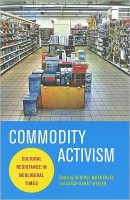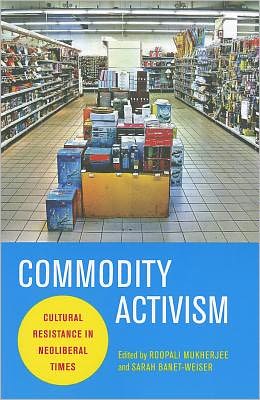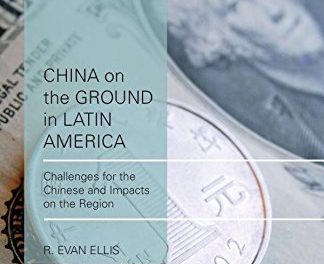 Publisher: New York University Press
Publisher: New York University Press
Book Review by: Deekay Daulat
The phrase ‘commodity activism’ is probably new to those who have not read about how some people are expressing themselves by what they buy or not buy something and influencing others to do the same.
This book is a collection of essays by 14 people (including the editors) organized and presented by Rupali Mukherjee, a professor of media studies at the City University of New York; and Sarah Benet-Weiser, an associate professor at the Annenberg School for Communications and Journalism and at the Department of American Studies and Ethnicity at the University of Southern California.
When the word ‘activism’ is uttered by anyone, what comes to mind? Those who lived through the 1960s know very well what ‘activism’ was. First and foremost it was the Student Movement (sometimes termed the Youth Movement) wherein the youth organized, led and participated in demonstrations to express their anger against United States’ involvement in the Vietnam War.
They also remember the images of violence from the Civil Rights Movement, the rallies against ecological destruction (known as the Environmental Movement) and the fight against poverty (the Anti-Poverty Movement). And who would forget the Feminist Movement for equal rights with men? And of course, the Gay Rights Movement.
Certainly overt and public expressions of ‘commodity activism’ – the subject of this book – are very few and far between. They are unlike the demonstrations, marches, rallies, sit-ins and other mass actions that dominated the news recurrently during the sixties. The turmoil of that era is far different from the sort of activism discussed in this book.
As a matter of fact the word ‘activism’ may be too strong or even inaccurate a word in the phrase ‘commodity activism’ as used in this book. The phrase ‘commodity culture’ may be a more apt one for the examples the authors mention in their work.
We see on television occasionally and read in newspapers every now and then actions by some people urging the public to boycott certain types of products. One instance of such actions is when animal rights activists walk with placards in front of fur stores. Sometimes even leather garment retailers become their targets.
Other recent examples of this relatively new form of activism (if you may correctly call it that) are even newscasters who propagate a self-developed “made in America” message to buy U.S.-made goods in order to prevent the loss of jobs to China, India and other major and medium-volume exporting countries.
We were taught in journalism classes that a reporter’s job is to report, not advocate this or that position. To be effective and credible in that profession, he or she has to be impartial, and neutral, not take sides. All of a sudden, some reporters have become advocates, lost their credibility and marred their reputation. Pushing American goods is certainly not a reporter’s job.
This is not to say that they cannot become advocates for any cause, but I believe that should be done on their own time.
The book gives other examples of the new commodity culture by citing names of some celebrities who participate in U.N.-sponsored humanitarian programs; and / or protest the trade in ‘blood diamonds’ (those mined through severe physical exertion of the workers).
Other forms of basically non-public examples of commodity culture presented in this book are the exhortations by actors and actresses to purchase Apple iPods, Dell computers and Gap T-shirts to add to the Global Fund whose aim is to eliminate AIDS in Africa.
Another example given in this book of a cause helped by a product purchase is the consumption of a “Caring Cup” of coffee. Its mission is to help promote free trade and humane labor practices. Driving a Toyota Prius is still another instance of the broad movement of saving fossil fuels – in this instance, oil. But is the consumer motivated by the noble cause of saving fossil fuels or by his pocket – to desire save money?
This book is a pioneering effort by two academics to bring to light some of their thoughts on a subject that I believe few people ever thought about, until they read this text. By putting those insightful observations and piecing them together in this work, we come to realize that somehow a whole new field of study is emerging. We applaud their path-breaking work shown in this unique book.







